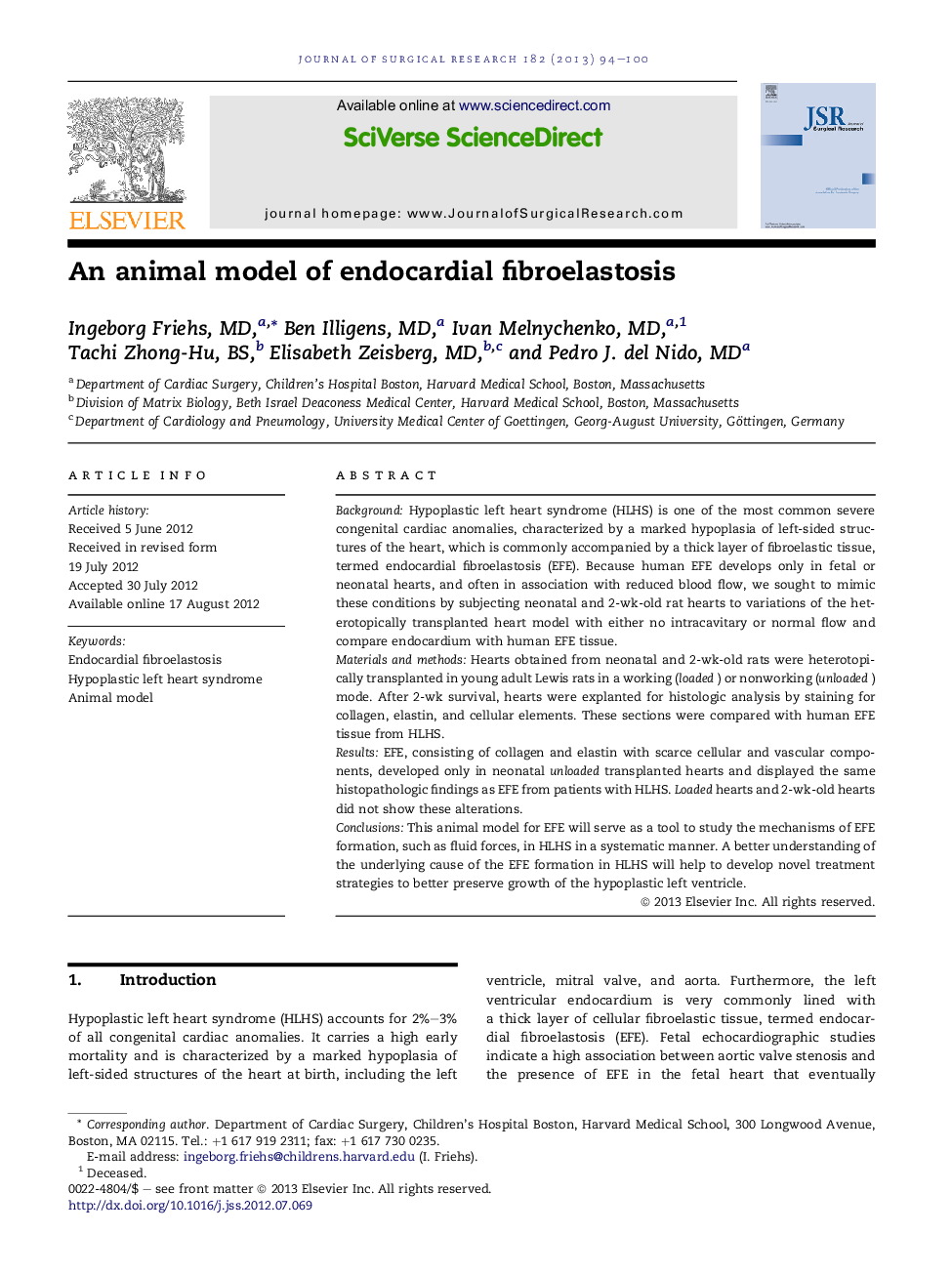| Article ID | Journal | Published Year | Pages | File Type |
|---|---|---|---|---|
| 4300945 | Journal of Surgical Research | 2013 | 7 Pages |
BackgroundHypoplastic left heart syndrome (HLHS) is one of the most common severe congenital cardiac anomalies, characterized by a marked hypoplasia of left-sided structures of the heart, which is commonly accompanied by a thick layer of fibroelastic tissue, termed endocardial fibroelastosis (EFE). Because human EFE develops only in fetal or neonatal hearts, and often in association with reduced blood flow, we sought to mimic these conditions by subjecting neonatal and 2-wk-old rat hearts to variations of the heterotopically transplanted heart model with either no intracavitary or normal flow and compare endocardium with human EFE tissue.Materials and methodsHearts obtained from neonatal and 2-wk-old rats were heterotopically transplanted in young adult Lewis rats in a working (loaded) or nonworking (unloaded) mode. After 2-wk survival, hearts were explanted for histologic analysis by staining for collagen, elastin, and cellular elements. These sections were compared with human EFE tissue from HLHS.ResultsEFE, consisting of collagen and elastin with scarce cellular and vascular components, developed only in neonatal unloaded transplanted hearts and displayed the same histopathologic findings as EFE from patients with HLHS. Loaded hearts and 2-wk-old hearts did not show these alterations.ConclusionsThis animal model for EFE will serve as a tool to study the mechanisms of EFE formation, such as fluid forces, in HLHS in a systematic manner. A better understanding of the underlying cause of the EFE formation in HLHS will help to develop novel treatment strategies to better preserve growth of the hypoplastic left ventricle.
